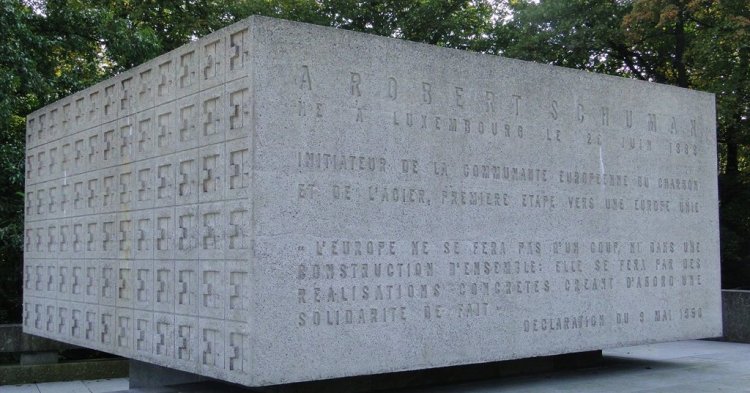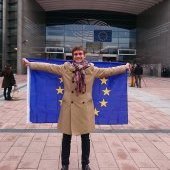While he was a lawyer in Metz, Schuman was elected into the French Parliament from Moselle in 1919. Between 1919 and 1936, he was very active in the commission on Alsace-Lorraine created by the French Chamber of Deputies. He worked on the difficult process of reintegrating Alsace and Moselle into the French Republic. Notably, Schuman wished to defend the local particularities of the former annexed departments which benefited from a better legal regime in fields such as religious freedom and social protections.
However, it was after World War Two, in the capacity of Foreign Minister (1948 to 1952), that Schuman took on a European perspective.
Economic difficulties piled on top of political problems related to confrontation between the Western and Eastern blocs. A crisis of the overproduction of steel seemed imminent. In a period of reconstruction, European countries could not afford their basic industries to fall victim to speculation or dearth. To disentangle this web of difficulties, Robert Schuman turned to Jean Monnet, chair of the Plan Commission tasked with economic planning.
Monnet believed that the unification of Europe would allow for attenuating the tensions between the two blocs. Having learned from the unfortunate experience with the Organisation for European Economic Co-operation (OEEC), Jean Monnet was convinced that European nations were not ready to consent to large-scale transfers of sovereignty. He recommended limiting the objectives of the project to two precisely defined domains, and putting in place a common decision-making mechanism that would gradually receive new competences. The biggest secret surrounded Jean Monnet’s project.
The plan only brought together six countries, namely France, Italy, the Federal Republic of Germany, and the Benelux countries. The link was very concrete: the alliance was a European Coal and Steel Community (ECSC), more advanced than a simple customs union as it would involve cartellised, supranational management of the production of these two goods. The capital was not concerned - certain enterprises were nationalised, but the majority were private - but the volume of production and retail prices were fixed by a High Authority, composed of nine members, together with the counterweight of the Common Assembly and a court of justice. Coal and steel still were key products as the reconstruction was coming to an end.
On the occasion of a speech given at the Quai d’Orsay [the Quai d’Orsay is where the French Ministry of Foreign Affairs is located] on 9 May, 1950, Robert Schuman announced the plan that would bear his name. The Schuman Plan became the cornerstone of the reconstruction of Europe, looking into the future and laying down the principle according to which “Europe will not be made all at once, or according to a single plan”, but “through concrete achievements which first create a de facto solidarity”.
After the end of his ministerial career, Robert Schuman remained very active in the European Movement, advocating for a union of Europe in conferences taking place as far as the United States. Around Schuman, one could find Konrad Adenauer (1876 - 1967), Alcide De Gasperi (1881 - 1954) and Joseph Bech (1887 - 19775). These men were all imbued with Catholic culture and a Latin-Germanic dual heritage.
On 25 March, 1957, the original six member states signed the Treaties of Rome instituting the Common Market and Euratom, in a culmination of ten years’ efforts by these pioneers of Europe. The first session of the European Parliamentary Assembly opened in Strasbourg on 19 March, 1958. Robert Schuman was elected President.
Finally, on 15 May, 1958, after Konrad Adenauer, Richard Coudenhove-Kalergi and Jean Monnet, Schuman was awarded the Charlemagne Prize crowning his actions as a promoter of the European idea. The European Parliamentary Assembly, for its part, unanimously awarded him with the title of a ‘founding father’ of the European Union two years later.
Robert Schuman subsequently retired from politics and synthesised his European ideas into a posthumously-published work, ‘For Europe’. In the book, he left this thought for later generations: ‘Europe, rather than being a military alliance or an economic entity, has to be a cultural community’.


Follow the comments: |
|
